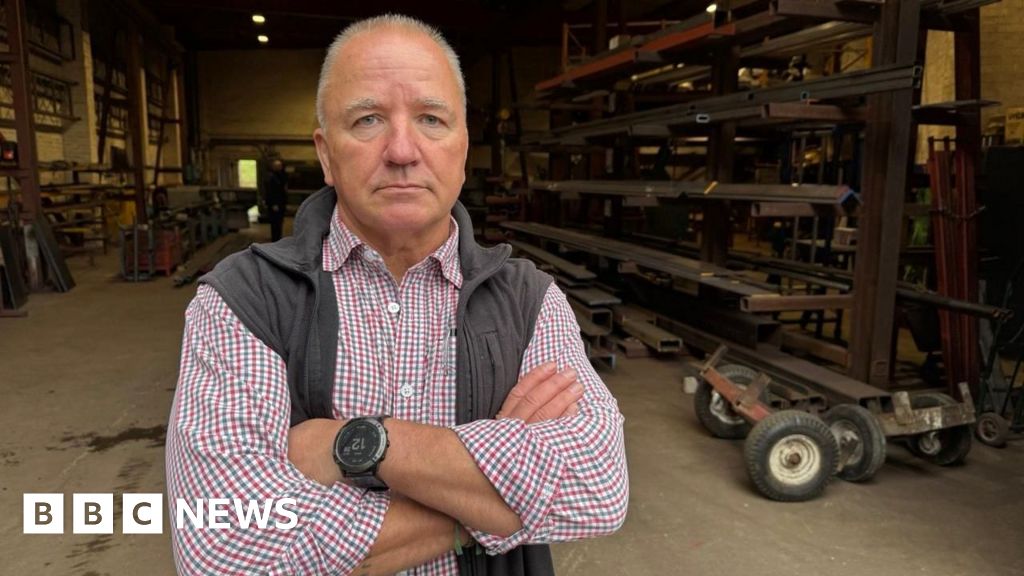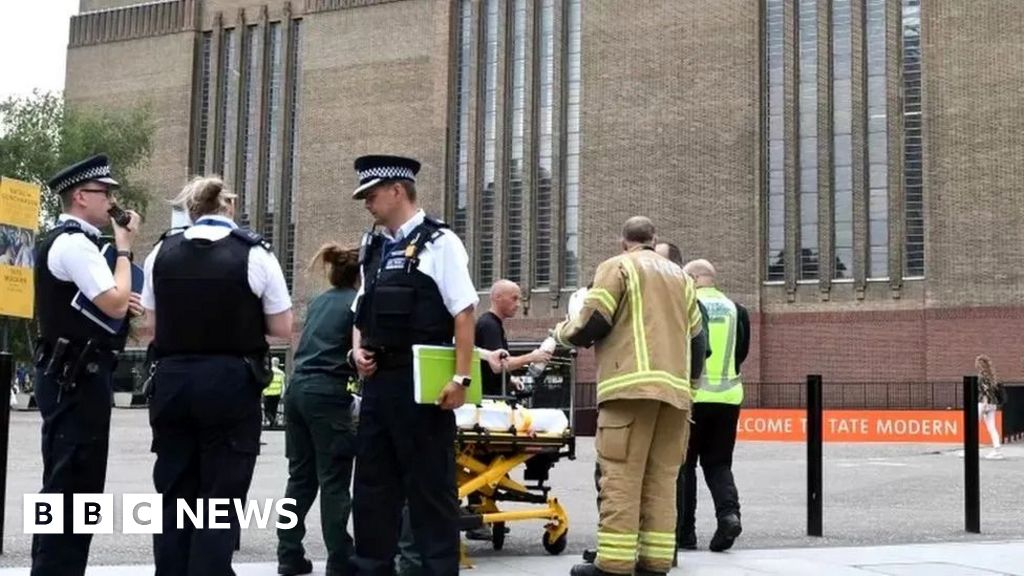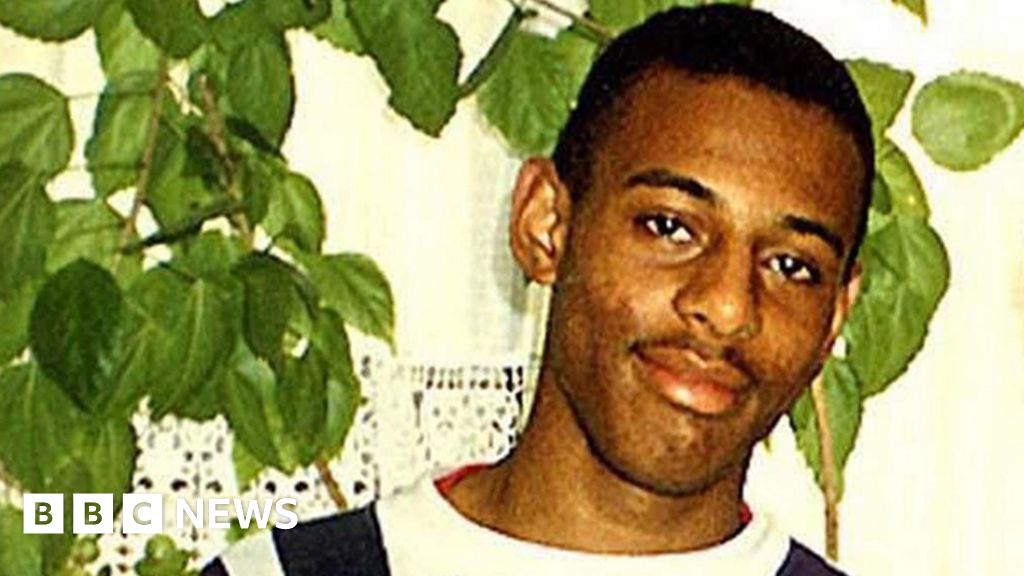Tarah WelshHousing correspondent


 BBC
BBC
Kyle (not his real name) had been living in his three-bedroom house in Greater Manchester with his pregnant wife and two children for a few weeks when he first noticed the mould in the bedroom.
He wiped it away but when it returned quickly, he realised there was a serious problem.
"It spread through the bedrooms and all through the walls,” he recalls. “Plug sockets used to blow because the water had gotten into them.”
Clothes, toys, beds and televisions had to be thrown away.
The family ended up sleeping on the living room floor, Kyle recalls - even after his wife returned from hospital with their newborn after giving birth.

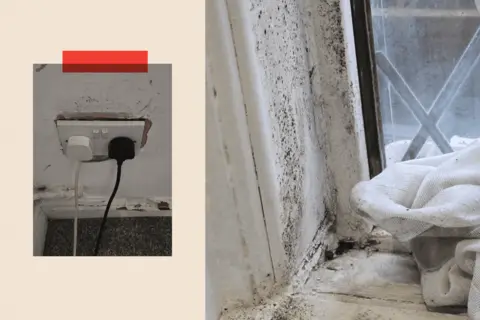
Kyle: “[Mould] spread all through the bedrooms, all through the walls - plug sockets used to blow because the water had got into them”
The landlord painted over the mould but failed to tackle the underlying problem, he claims.
Kyle, an admin worker, and his family had rented the property on the private market, but after seven months they moved out and now live in temporary accommodation.
“It was a nightmare. I didn't know what to do - I just felt like crying most of the time."
In Britain, problems with damp and mould are widespread. In all, 1.3 million dwellings in England - 5% of the total - had damp problems in one or more rooms in 2023-4, according to government figures released earlier this year.
Concerningly, more than a million children lived in damp households.
This is the case despite widespread public shock after Awaab Ishak, a two-year-old boy from Rochdale, died from a respiratory condition caused by exposure to mould in 2020.

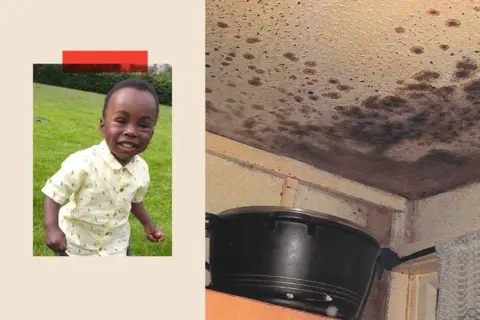 Getty Images
Getty Images
A coroner concluded that two-year-old Awaab died from a respiratory condition caused by exposure to mould in his Rochdale home
Awaab's father Faisal Abdullah had repeatedly raised the issue with the flat with Rochdale Boroughwide Housing (RBH). "They don't do anything for you - it's really devastating," he says.
"How - in the UK in 2020 - does a two-year-old child die from exposure to mould in his home?" Coroner Joanne Kearsley asked during the inquest.
Crucially, she asked the government to take action to prevent future deaths.
Now, five years on from Awaab’s death, the Coroner’s question prompts another.
That is: why - even now having seen the devastating consequences for that two-year-old boy - does mould remain a scourge in so many homes? And is enough being done in the UK to change that?
Awaab’s law and its limits
New legislation, designed to protect renters from hazards in their homes, was passed in July 2023 and is due to come in to effect this month. It’s known as Awaab’s law.
From 27 October, social landlords in England will be forced to fix damp and mould within strict timescales. Hazards like damp and mould must be inspected within 10 working days, and made safe within five, after the inspection.
More serious issues such as gas leaks, broken boilers - or when damp or mould are affecting a tenant's health - will need to be looked at within 24 hours.
If social landlords can't meet those deadlines, they will be obliged to offer alternative accommodation. And if they fail, tenants can take legal action against for breach of contract. They can also make a claim via a complaints procedure.
But for now, this legislation only applies to the social rented sector (such as council housing or homes rented from housing associations) - and not the 4.6 million households in England who rent privately - like Kyle and his family.
Though the government says it will be extended to the private rented sector, it has not yet set a date.
And so, while some have welcomed Awaab's law, other campaigners ask how effective it really will be, given the limitations.
Damp, mould and asthma
Hannah is a respiratory nurse in the North East of England - her patients have asthma flare ups, chest infections and other sorts of respiratory issues that lead to hospital admissions. In her view, asthma cases linked to mouldy homes are all too familiar.
"I work in fairly deprived areas and see a high number of patients whose symptoms are made worse, or even caused, by damp and mould in their homes," she says.
"We see the consequences every single day."
People living with mould are indeed more likely to suffer from respiratory illnesses, infections, allergies and asthma.
NHS England spent an estimated £1.4bn every year treating illnesses associated with living in cold or damp housing, according to a 2021 report from building research body BRE.

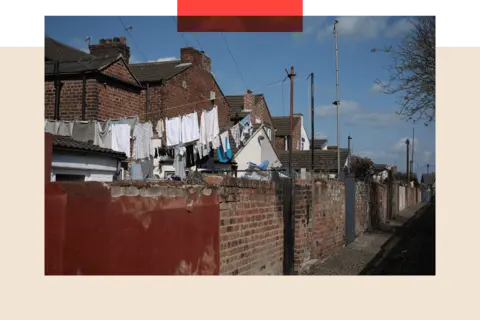 AFP via Getty Images
AFP via Getty Images
NHS England spent an estimated £1.4bn every year treating illnesses linked to living in cold or damp housing, a 2021 report found
The figures also verify that it’s an issue disproportionately affecting the less well-off: of the one million children living in damp properties, almost half (482,000) had a relatively low income.
Retirees are affected too - some 324,000 people were aged 65 or older.
And Awaab Ishak's death is a stark reminder of what's at stake.
Years of complaints: ‘Nothing was done’
Awaab had consistently suffered from cold and respiratory issues throughout his short life. After becoming short of breath, he went into respiratory and cardiac arrest and died in December 2020.
He was just two years old.
Christian Weaver, a barrister who represented Awaab Ishak's family during the inquest, describes the case as an "eye-opener" - in particular, hearing how persistently the family had tried to get help.
"They'd made complaints for years, an NHS health visitor had written to Rochdale Boroughwide Housing, and even someone from the landlord's own team had visited the property - but nothing was done."
The Manchester North senior coroner said ventilation in the one-bedroom flat in which he lived had not been effective.
"This was a direct contributing factor in the development of the mould," Ms Kearsley said.
In response, Rochdale Boroughwide Housing says: "The most important thing to us is our customers live in safe, warm and comfortable homes.
”Over the last 18 months our teams have been working hard to ensure we are ready for the introduction of Awaab's Law, and we have reviewed and improved all our work processes and practices.
"We continue to urge all our customers to report any potential issue with damp, mould or condensation in their homes to us as soon as they can, so we can act quickly to investigate and resolve any issues."
RBH also says it is "already planning ahead for the expansion of the scope of Awaab's Law, beyond mould and damp, over the next two years".
’A national epidemic’
Mould will only grow if it is given moisture, nutrients and warmth - and so there are certain things tenants can do to help stop or slow the spread.
Not clothes inside, for instance, opening windows and not putting the heat on too high, explains Riina Rautemaa-Richardson, an expert in fungal infectious diseases at Manchester University.
But poor ventilation can also be caused by structural problems like roof leaks or poor drainage, she says - and landlords have a responsibility to address these root causes.

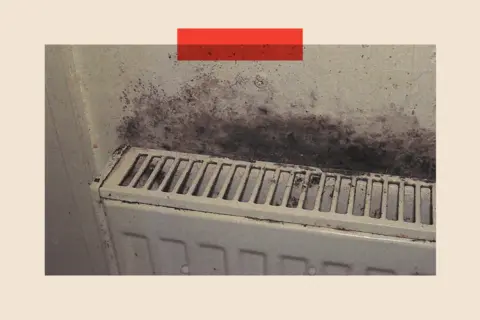 Rochdale Coroner's Office
Rochdale Coroner's Office
Awaab Ishak's death prompted new legislation
Tackling the problem also requires something bigger too, many experts believe - that is, addressing underlying problems with the nation's housing stock.
"There is a national epidemic of damp and mould cases which has prevailed for many years," says Michael Parrett, a buildings pathology specialist.
The underlying problem, he believes, is that "dampness in buildings is misdiagnosed and at worst misunderstood".
Is the new law enough?
Housing Secretary Steve Reed believes the new law changes, which passed when the previous Conservative government was in office, will help.
"[It] will give tenants a stronger voice and force landlords to act urgently when lives are at risk, ensuring such tragedies are never repeated."
But some housing campaigners want firmer commitments around when Awaab's Law will extent to the private sector.
"We've heard nothing from the government about when it will apply to private renters," says Tom Darling, director of Renters Reform Coalition.
“That needs to happen urgently, and the protections be watertight."


Christian Weaver, a barrister who represented Awaab Ishak's family during the inquest, describes the case as an "eye-opener"
The government is expected to set out how it will apply to the private rented sector soon - they say they want to make it "fair, proportionate and effective for both tenants and landlords".
They will also need to decide whether small private landlords should be expected to respond as quickly as the likes of large social landlords.
But certain official figures suggest that it it’s private rental tenants who need the most protection.
According to the English Housing Survey, these homes are less likely to meet a "decent standard" than those that are socially owned.
In 2023, 3.8 million dwellings failed to meet this standard. Private rented dwellings were most likely to be classed as non-decent - in all 21% were.
People who rent part of their property from a social landlord under a shared ownership scheme will not be protected however.
Nonetheless, some welcome the new legislation as a step in the right direction.
Richard Blakeway, the housing ombudsman, says Awaab's Law is a "vital way to improve housing conditions and strengthen residents' rights".
Landlords being set up to fail?
The changes will be implemented in phases, along with rules around other hazards, such as structural and electrical issues. But some warn that this all could end up putting the onus on landlords rather than tackling the root causes with the nation's housing stock.
"What it's going to do is put landlords under extreme pressure", says Michael Parrett. "They are stretched already. I think in some cases it will set up landlords to fail."
With councils and housing associations having to do repairs with such quick turnarounds, it will have a knock-on effect on the budgets of councils too, some of which are already on the brink of bankruptcy.
Cllr Tom Hunt of the Local Government Association argued: "Councils need sufficient funding to mitigate the existing pressures on housing stock so that they can put these new measures in place swiftly.”
Meanwhile Alistair Smyth, director of policy and research at the National Housing Federation (NHF), says that whilst NHF supports the principles of Awaab's law, it will be a "challenge" for its members to comply with.
But for those affected, including Awaab’s family, however, the most important thing is to bring an end to the mould problems - and end the risk of further fatalities. And fast, given how long this debate has already stretched on.
“A lot of people, they're not going go through the same [that] I went through,“ says Awaab’s father.
"What's truly heart-breaking is these are preventable deaths," adds Hannah, the nurse.
"We like to think we're forward-thinking in public health, but… there’s a huge gap between the policy and the reality.
“We’ve really let people down.”


BBC InDepth is the home on the website and app for the best analysis, with fresh perspectives that challenge assumptions and deep reporting on the biggest issues of the day. You can now sign up for notifications that will alert you whenever an InDepth story is published - click here to find out how.
.png)
 5 hours ago
2
5 hours ago
2




